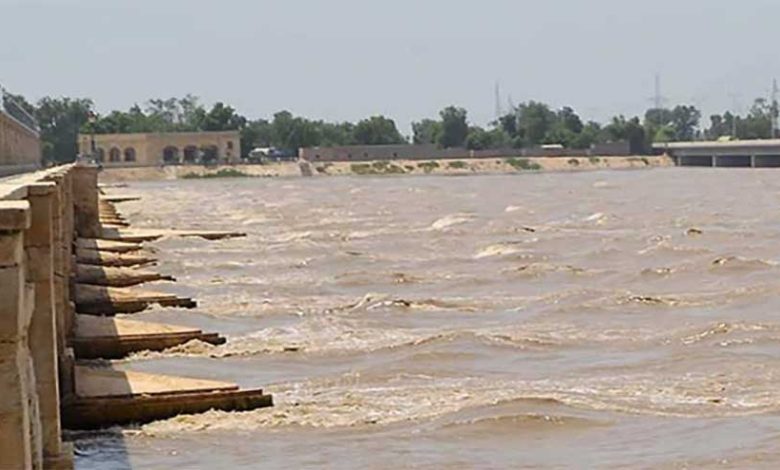The water situation in Sindh barrages is constantly changing.

The most recent information on water input and outflow in Sindh’s numerous barrages and rivers has been made public by the Provincial Rain and Flood Emergency Monitoring Cell.
The province’s water condition has drastically changed, according to the data.
Water intake and outflow from the Indus River fluctuate constantly. Additionally, Sukkur Barrage has seen a remarkable shift in water level that is having an impact on the neighbourhood.
Over the past 12 hours, the water intake at Trimmum Barrage has grown by 112,576 cusecs to 488,169 cusecs, while the water outflow at the barrage has likewise climbed to 488,169 cusecs.
The inflow and outflow of water at Panjnad barrage was recorded at 345,047 cusecs, which is also affecting conditions at Guddu and Sukkur barrages.
These are some of Sindh’s most significant barrages, where the water flow is continuously observed.
With an inflow of 366,151 cusecs and an outflow of 328,487 cusecs, the Guddu barrage is predicted to see significant flooding today.
Although the water level has somewhat decreased, it is still fluctuating, which might make local regions more vulnerable to flooding.
The water level at Sukkur Barrage has also changed significantly, impacting the neighbouring surroundings, as a result of the water’s 329,990 cusec inflow and 281,985 cusec outflow.
River water flow has also been impacted by the Kotri barrage, which reported an input of 245,452 cusecs and an outflow of 226,497 cusecs, which is greater than usual.
Also read: South Punjab suffers extensive damage from flooding as Sindh braces
Bahawalpur has been severely damaged by a recent surge in floodwaters from the River Sutlej, which broke embankments and flooded neighbouring communities.